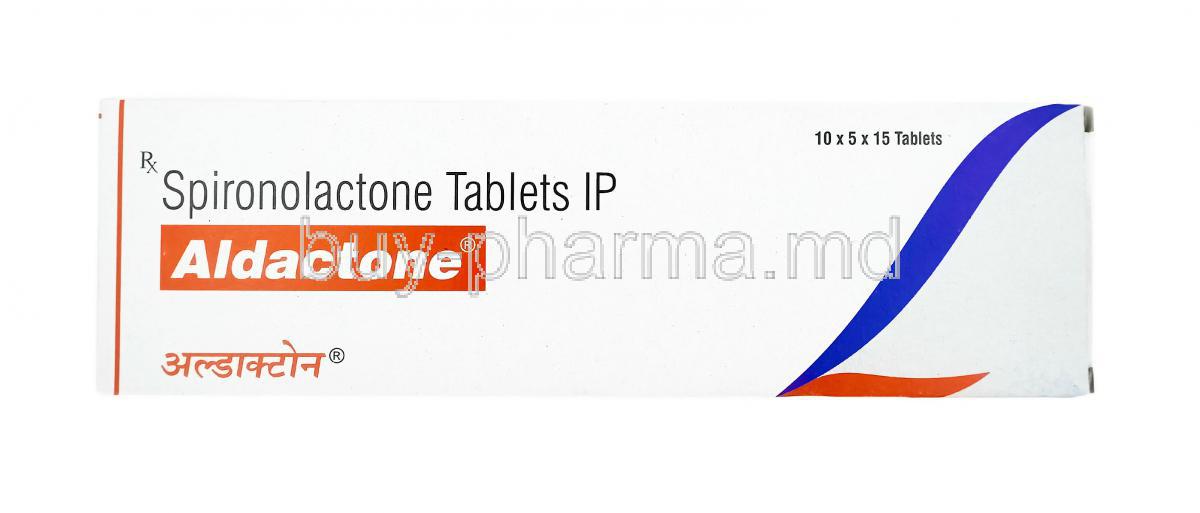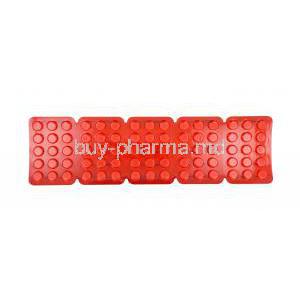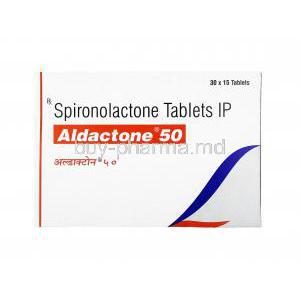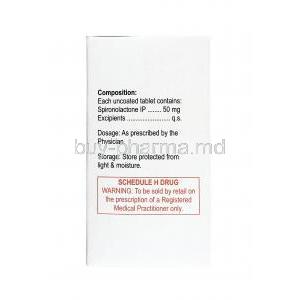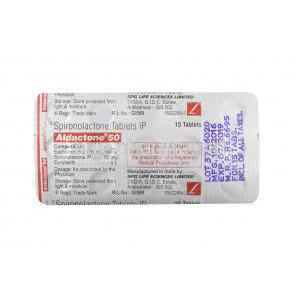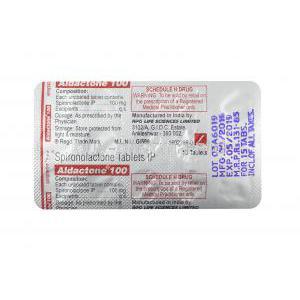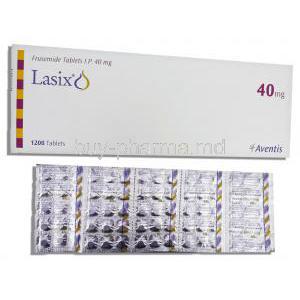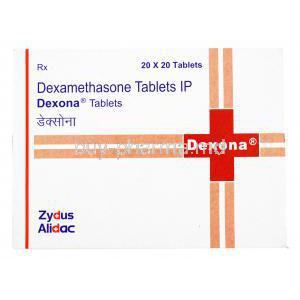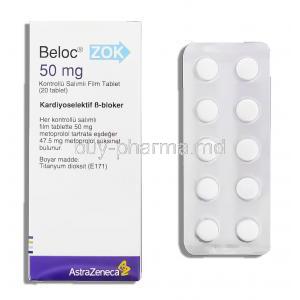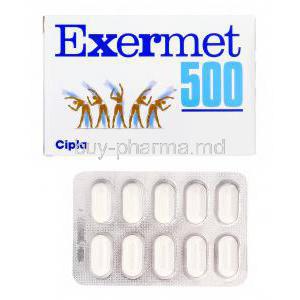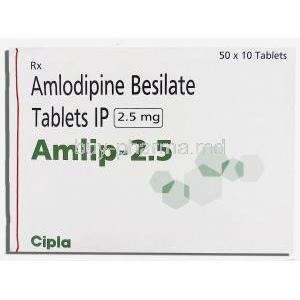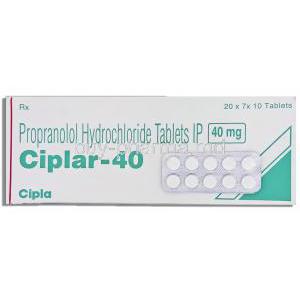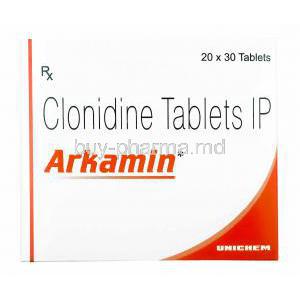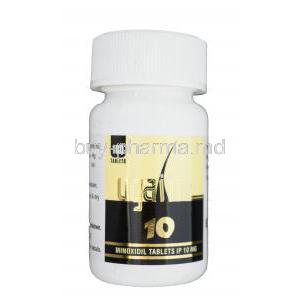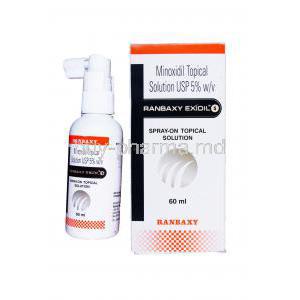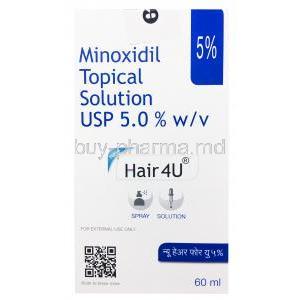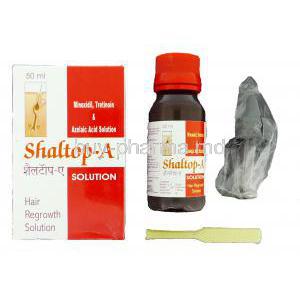Introduction
Overview of Aldactone (brand name) and Spironolactone (generic name)
Aldactone, known generically as spironolactone, is a well-established therapeutic agent that plays a crucial role in managing conditions linked to fluid retention, hormonal imbalances, and elevated blood pressure. As a potassium-sparing diuretic, it exerts powerful yet selective effects on the body’s electrolyte balance, distinguishing it from conventional diuretics.
Historical background and FDA approval timeline
Spironolactone was developed in the late 1950s and received FDA approval in 1960. Since then, it has evolved into one of the most frequently prescribed diuretics for both cardiovascular and endocrine-related conditions. Over decades, its medical significance has expanded, with widespread use across multiple therapeutic domains.
Therapeutic classification as a potassium-sparing diuretic and aldosterone antagonist
This medication belongs to the category of potassium-sparing diuretics and is classified pharmacologically as an aldosterone antagonist. By counteracting aldosterone, a hormone responsible for sodium retention and potassium excretion, spironolactone balances fluid levels without the substantial risk of potassium loss typical of other diuretics.
Composition and Formulations
Active ingredient: Spironolactone
The active constituent is spironolactone, a synthetic steroidal compound with diuretic and anti-androgenic effects.
Available dosage forms: tablets, suspension, intravenous (limited use)
Aldactone is most commonly available in oral tablet form, though liquid suspension preparations are also used, particularly for pediatric or elderly patients. Intravenous forms are rarely used and generally confined to specialized settings.
Strengths and excipients
- Tablets: Typically available in 25 mg, 50 mg, and 100 mg strengths
- Suspensions: Designed for accurate pediatric dosing
- Inactive components: may include lactose, starch, and coloring agents depending on the manufacturer
Mechanism of Action: How Spironolactone Works
Aldosterone antagonism and effects on sodium and potassium balance
Spironolactone selectively blocks aldosterone receptors in the distal nephron. This results in the excretion of sodium and water while conserving potassium, directly correcting fluid overload and preventing hypokalemia.
Reduction of fluid retention and blood pressure
By modulating salt and water balance, spironolactone decreases intravascular volume. This leads to reduced blood pressure and alleviation of edema, making it invaluable in cardiovascular management.
Anti-androgenic properties and hormonal effects
Spironolactone also binds to androgen receptors, diminishing the impact of male hormones. This mechanism underlies its off-label use in conditions such as acne, hirsutism, and polycystic ovary syndrome (PCOS).
Approved Medical Uses of Aldactone
Management of hypertension (high blood pressure)
Spironolactone is effective in controlling blood pressure, particularly in patients with resistant hypertension where standard therapies fail.
Treatment of edema in heart failure, cirrhosis, and nephrotic syndrome
By promoting diuresis, Aldactone reduces edema associated with congestive heart failure, liver cirrhosis, and nephrotic syndrome, thereby improving patient comfort and prognosis.
Primary hyperaldosteronism (diagnosis and treatment)
Aldactone is used in both the diagnostic evaluation of hyperaldosteronism and as a therapeutic agent for patients with aldosterone excess.
Heart failure with reduced ejection fraction (HFrEF)
In HFrEF, spironolactone has been shown to reduce mortality and hospitalization rates, especially when used in combination with other heart failure therapies.
Off-Label Uses of Spironolactone
Treatment of acne in women
Spironolactone’s anti-androgenic action helps reduce sebum production, making it a potent choice for persistent hormonal acne in women.
Management of hirsutism and polycystic ovary syndrome (PCOS)
It is frequently prescribed for women with excess hair growth and PCOS, improving cosmetic outcomes and hormonal balance.
Role in transgender hormone therapy
Spironolactone serves as an anti-androgen in transgender women, aiding in the suppression of male secondary sexual characteristics.
Use in resistant hypertension
In patients where multiple antihypertensive agents are insufficient, spironolactone provides significant additional blood pressure reduction.
Other investigational uses in nephrology and endocrinology
Studies are exploring its role in chronic kidney disease progression and various endocrine-related disorders.
Dosage and Administration Guidelines
Standard dosing for hypertension and edema
Typical starting doses range from 25 to 100 mg daily, adjusted based on patient response and laboratory monitoring.
Dosage adjustments for hyperaldosteronism
Higher doses, often 100–400 mg daily, may be required for diagnostic or therapeutic management of primary hyperaldosteronism.
Off-label dosing for acne and PCOS
Women may receive doses between 50–200 mg daily depending on clinical response and tolerance.
Titration and monitoring requirements
- Gradual dose escalation to minimize adverse effects
- Regular monitoring of serum potassium and renal function
Missed dose instructions
If a dose is missed, it should be taken as soon as remembered unless it is close to the next scheduled dose. Doubling doses should be avoided.
Side Effects of Spironolactone
Common Side Effects
- Dizziness and headache
- Gastrointestinal upset such as nausea or diarrhea
- Hyperkalemia leading to muscle weakness or palpitations
- Hormonal effects including gynecomastia and menstrual irregularities
Serious Adverse Effects
- Severe hyperkalemia with potential for life-threatening arrhythmias
- Renal dysfunction and elevated creatinine levels
- Endocrine-related side effects such as impotence or breast tenderness
Drug Interactions
Interaction with ACE inhibitors and ARBs
Combined use significantly increases the risk of hyperkalemia and requires close monitoring.
Concomitant use with potassium supplements and salt substitutes
Both raise serum potassium and may precipitate dangerous arrhythmias.
Effects with NSAIDs
Nonsteroidal anti-inflammatory drugs may reduce the diuretic effect and impair renal function when used concurrently with spironolactone.
Interactions with digoxin, lithium, and diuretics
Spironolactone may enhance digoxin toxicity, alter lithium levels, and interact with other diuretics, necessitating individualized therapeutic planning.
Warnings and Safety Precautions
Risk of life-threatening hyperkalemia
Spironolactone can elevate serum potassium to dangerously high levels. Hyperkalemia may precipitate cardiac arrhythmias, muscle paralysis, and in severe cases, sudden death. The risk is heightened in patients with impaired renal clearance or those on concurrent potassium-raising agents.
Monitoring requirements for kidney function and electrolytes
Close surveillance of renal parameters and electrolytes is essential. Periodic assessment of:
- Serum potassium
- Serum creatinine
- Estimated glomerular filtration rate (eGFR)
helps in identifying early signs of toxicity and allows timely dosage modifications.
Long-term cancer risk considerations (animal data)
Animal studies have suggested a potential link between spironolactone exposure and tumorigenesis. While definitive human evidence remains inconclusive, long-term use warrants caution and individualized risk–benefit evaluation.
Contraindications
Known hypersensitivity to spironolactone
Individuals with a documented allergic reaction to spironolactone or related compounds must avoid its use entirely.
Anuria or acute renal insufficiency
Spironolactone is contraindicated in patients with complete absence of urine production or acute renal failure, as it can exacerbate fluid and electrolyte imbalance.
Significant hyperkalemia
Pre-existing high potassium levels render spironolactone unsafe, with a strong potential for worsening electrolyte abnormalities.
Addison’s disease
Due to intrinsic adrenal insufficiency, patients with Addison’s disease are at high risk of profound hyperkalemia when exposed to aldosterone antagonists.
Careful Administration and Important Precautions
Dose adjustments in patients with chronic kidney disease
Renal impairment necessitates conservative dosing to prevent accumulation and toxicity. Even low doses can provoke adverse events in patients with reduced kidney function.
Caution with concurrent antihypertensive therapy
When used alongside other antihypertensives, spironolactone may potentiate hypotension. Careful titration and patient education are required to avoid symptomatic drops in blood pressure.
Polypharmacy and elderly patients
The elderly often require multiple medications, increasing the likelihood of drug–drug interactions. Reduced renal reserve further amplifies spironolactone-related risks in this population.
Risk of electrolyte imbalance in debilitated individuals
Frail patients with malnutrition or chronic illness may experience more pronounced shifts in sodium and potassium. Close observation is mandatory to avert complications.
Use in Special Populations
Administration to Elderly Patients
Elderly individuals are predisposed to renal impairment and hyperkalemia. Safe prescribing often entails:
- Initiating at the lowest possible dose
- Frequent laboratory monitoring
- Gradual dose escalation only if tolerated
Administration to Pregnant Women and Nursing Mothers
Spironolactone is not recommended during pregnancy, as its hormonal effects may interfere with fetal development. Animal studies have shown feminization of male fetuses. Moreover, the drug and its metabolites are excreted into breast milk, posing theoretical risks to nursing infants.
Administration to Children
Pediatric use is limited and typically reserved for rare conditions such as nephrotic syndrome. Dosing requires individualized calculation based on body weight and close medical supervision.
Overdosage and Emergency Management
Symptoms of spironolactone overdose
Overdose may manifest as:
- Severe hyperkalemia
- Profound hypotension
- Drowsiness, confusion, or gastrointestinal distress
Risk of severe hyperkalemia and hypotension
These two complications are the most life-threatening consequences of excessive dosing and require urgent intervention.
Supportive treatment and emergency interventions
Management involves cessation of the drug, intravenous fluids, correction of electrolyte imbalances, and cardiac monitoring. In extreme cases, dialysis may be required to remove excess potassium.
Storage and Handling Precautions
Recommended storage conditions for tablets and suspensions
Store spironolactone tablets and suspensions at room temperature, away from moisture, heat, and direct light. Suspensions should be shaken well before use and tightly capped after administration.
Shelf life and expiration considerations
Expired medications should not be used, as potency and safety cannot be guaranteed. Always adhere to the manufacturer’s expiration date printed on the packaging.
Handling precautions for caregivers and healthcare providers
Caregivers handling spironolactone should wash their hands before and after administration. Suspensions should be measured with calibrated devices, and tablets should not be crushed unless directed by a healthcare professional.

